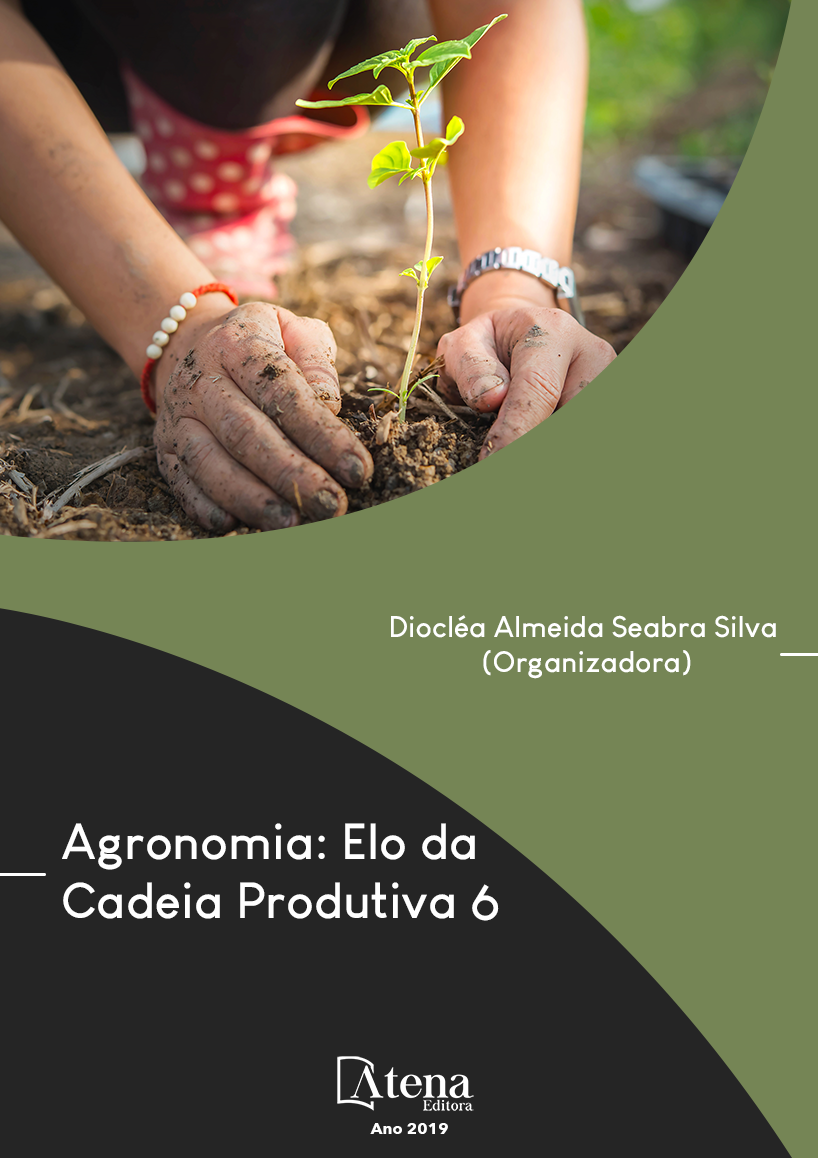
TEOR DE NITROGÊNIO ORGÂNICO NAS FOLHAS E DE PROTEÍNA BRUTA NOS GRÃOS DE SOJA FERTILIZADA COM NITROGÊNIO E MOLIBDÊNIO
Instalaram-se quatro experimentos
com soja em Viçosa e Coimbra, Zona da Mata
de Minas Gerais. Em 1995/96, utilizou-se um
fatorial (4 x 4) + (1 x 4), quatro doses de N (0,
40, 80 e 120 kg/ha), aplicadas parceladamente
em cobertura, combinadas com quatro doses
de Mo (0, 40, 80 e 120 g/ha), em aplicação foliar
aos 27 dias após a emergência das plantas,
mais quatro tratamentos adicionais: 40-20, 40-
40, 40-60 e 40-80 de N (kg/ha) e Mo (g/ha), o
primeiro aplicado parceladamente em cobertura
e o segundo, nas sementes. Em 1996/97,
apenas as combinações N-Mo dos tratamentos
adicionais foram diferentes: 0-40, 0-80, 40-40
e 40-80. Todas as parcelas receberam uma
adubação básica de 120 kg/ha de P2
O5 e 60 kg/
ha de K2
O. As sementes foram inoculadas com
duas estirpes de Bradyrhizobium japonicum. A
soja CAC-1 foi semeada em fileiras espaçadas
de 0,6 m, com 15 plantas/m. Os resultados
mostraram que: a) em três experimentos
o Mo aumentou o teor de N-orgânico nas
folhas e a dose mais favorável variou de 79
a 120 g/ha, em aplicação foliar, e de 27 a 80
g/ha, quando administrada via sementes; b)
em três experimentos o N incrementou o teor
de N-orgânico, sendo 120 kg/ha a dose mais
favorável; c) sozinho, o Mo trouxe aumentos do
teor de N-orgânico que variaram de 4,6 a 9,4%,
enquanto o efeito isolado do N foi de 2,0 a
10,4%; d) quando houve efeito conjunto de N e
Mo, o aumento do teor de N-orgânico variou de
13,4 a 17,4%; e) para o teor de N-orgânico, não
houve diferença entre a aplicação do Mo nas
folhas ou nas sementes ou, então, a aplicação
nas sementes foi mais eficiente; f) O teor de
proteína bruta nas sementes foi, geralmente,
aumentado pela aplicação de Mo e, às vezes,
pela do N; g) A dose mais favorável de Mo em
aplicação foliar para a PB variou de 82 a 120 g/
ha.
TEOR DE NITROGÊNIO ORGÂNICO NAS FOLHAS E DE PROTEÍNA BRUTA NOS GRÃOS DE SOJA FERTILIZADA COM NITROGÊNIO E MOLIBDÊNIO
-
DOI: 10.22533/at.ed.25019031220
-
Palavras-chave: Glycine max, nitrogenase, redutase do nitrato, Bradyrhizobium japonicum.
-
Keywords: Glycine max, nitrogenase, nitrate reductase, Bradyrhizobium japonicum.
-
Abstract:
Soybean experiments were carried
out in Viçosa and Coimbra in the “agricultural
year” of 1995/96 and repeated in both localities
in 1996/97. In the first year a (4 x 4) + (1 x 4)
factorial was used, in which the factors were
four doses of N (0, 40, 80 and 120 kg/ha) x
four doses of Mo (0, 40, 80 and 120 g/ha). The
nitrogenous fertilizer was applied parcelled as
side dressing, while the molybdic fertilizer was sprayed on the leaves 27 days after plant emergence. The four additional treatments
comprised the following combinations of N (kg/ha) and Mo (g/ha): 40-20, 40-40, 40-60
and 40-80, in which the first was applied parcelled as side dressing and the second at
the seeds. In the second year, only the N-MO combinations of the additional treatments
were different: 0-40, 0-80, 40-40 and 40-80. All plots received a basic fertilization of
120 kg/ha of P2
O5 and 60 kg/ha of K2
O. Seeds were inoculated with two strains of
Bradyrhizobium japonicum. Soybean cultivar CAC-1 was planted in rows 0.6 m apart
at the density of 15 plants/m. The results showed that: a) In three experiments Mo
increased the organic N content in leaves and the most favorable dose ranged from 79
to 120 g/ha in foliar application and from 27 to 80 g/ha when administered via seeds;
b) in three experiments N increased organic N content, with 120 kg/ha being the most
favorable dose; c) Mo alone brought increases in organic N content ranging from 4.6 to
9.4%, while the isolated effect of N was 2.0 to 10.4%; d) when there was a combined
effect of N and Mo, the increase in organic N content ranged from 13.4 to 17.4%; e) for
the organic-N content, there was no difference between the application of Mo on leaves
or seeds, or the application on seeds was more efficient; (f) the crude protein content
of the seeds was generally increased by applying Mo and sometimes by applying N; g)
The most favorable dose of Mo in foliar application for CP ranged from 82 to 120 g/ha.
-
Número de páginas: 19
- Clibas Vieira
- Lucio Pereira S


